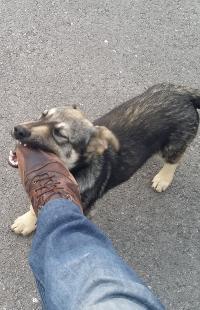Category: User Exchange
I wrote this up in chat gpt pretty quickly I think it just about covers all of the bases here of the project.
CNC Plasma Table – Electrical & Wiring Requirements
Project: Remote design of electrical system + wiring documentation for LinuxCNC plasma table
Client: TCB Metal Works
1. Project Overview
You will remotely design the complete electrical and control system for a custom CNC plasma cutting table powered by LinuxCNC.
You will create:
Complete wiring diagram set (schematic + physical routing)
Full Bill of Materials (BOM) with real part numbers
Wire gauge, shielding, grounding, and EMI mitigation plan
Bulkhead connector list + panel layout
Mesa board selection + full LinuxCNC I/O map
Integration notes for all components
Testing & commissioning checklist
This is a 100% remote engineering job — no physical inspection of hardware is required.
2. Available Power Sources
Near the machine:
220 VAC available
460 VAC available
No dedicated 110/120 VAC, which must be generated using a control transformer if needed
Engineer must design the incoming power strategy and transformer selection.
3. Motion Hardware
3.1 X & Y Axis – AC Servos (Provided)
3× A6 Series 1000W RS485 AC Servo Motor Kits
3000 rpm
3.18 Nm
17-bit absolute encoder
IP67 motors
Axis layout:
Y axis: 2 servos (dual-drive gantry)
X axis: 1 servo
Notes:
Motor-to-drive cables are already supplied by the manufacturer.
You do not need to design or evaluate those cables.
Engineer must:
Design AC mains wiring to each servo drive
Design control, enable, alarm, and ESTOP signal wiring between drives and Mesa
Include needed fuses, breakers, filters, and terminals
Provide cabinet layout and routing plan
Include proper grounding and shielding recommendations
3.2 Z Axis – Stepper Motor (Needs Driver + Cable)
PV267-D2.8AA stepper motor — Oriental Motor
Stepper driver not provided
Stepper motor cable not provided
Engineer must:
Select a compatible stepper driver suitable for PV267-D2.8AA + LinuxCNC step/dir
Define driver voltage supply requirements
Design:
Step/Dir wiring from Mesa
Motor wiring from driver to Z motor
Required cable shielding, gauge, and insulation
Connector type and strain relief
4. Control Electronics (Mesa + Power)
Engineer must select Mesa hardware capable of supporting:
3× servo axes
1× stepper axis
THC-AD
Ohmic sensing
All limit/floating switches
Plasma start / Arc OK
E-stop & safety I/O
Deliverables:
Recommended Mesa board combination (e.g., 7i76E, 7i96S, 7i85, THCAD, etc.)
Justification for chosen hardware
Complete LinuxCNC I/O mapping
Required DC power supplies (24V / 5V / others)
Proper AC distribution, fuses, breakers, and protection devices
5. Torch Height & Ohmic Sensing
5.1 THC-AD Integration
Engineer must design:
Raw arc voltage wiring from Hypertherm HT2000 to THC-AD
THC-AD signal wiring to Mesa
Required shielding and filtering
Scaling notes for LinuxCNC
5.2 Ohmic Sensing (Planned)
Engineer must:
Recommend a compatible ohmic board
Provide wiring diagram for torch → ohmic board → Mesa
Specify cable type and shielding
Document signal polarity & behavior
6. Hypertherm HT2000 Integration
Engineer must design wiring for:
Required signals
Torch start / trigger
Arc OK
Raw arc voltage (+/–) into THC-AD
Required protection
Isolation (if needed)
Surge suppression
Filtering
EMI protection
Routing rules
Arc voltage wiring must be kept separate from low-voltage control wiring
7. Limit Switches & Floating Head
X Axis
2 limit switches:
X-min
X-max
Y Axis (Dual Gantry Drive)
2 limit switches:
Y-min
Y-max
Engineer must propose a reliable gantry squaring / homing method for the two Y motors.
Z Axis
2 end-of-travel limit switches:
Z-min
Z-max
1 floating-head switch (touch-off)
Engineer must:
Select appropriate switch type (mechanical or prox)
Provide wiring diagrams to Mesa
Specify wire gauge, shielding, and cable routing
Provide LinuxCNC input mapping
Include any debouncing/filtering requirements
8. Wiring, Shielding, & EMI
Engineer must specify:
Wire gauges for:
AC mains
Servo drive feeds
Stepper driver feeds
Stepper motor wiring
Limit/floating/ohmic wires
Plasma signals
DC supply lines
Shielding requirements for:
Step/dir
Limits/floating/ohmic
Arc voltage
THC-AD lines
EMI considerations
Cable separation
Ferrite locations
Filtering recommendations
9. Grounding & Bonding
The engineer must design the grounding/bonding approach.
Important physical detail:
The water table, gantry, and control cabinet are three separate physical assemblies.
The engineer must account for this when designing:
Grounding/bonding layout
EMC/EMI mitigation
Plasma return path considerations
Ohmic sensing grounding
No grounding method (star, bus, single-point, etc.) is mandated — the engineer chooses the correct approach.
10. Control Cabinet & Bulkheads
Engineer must design:
Cabinet Layout
AC distribution, transformers, PSUs
Mesa boards
Servo drives
Stepper driver
Fuses, breakers, contactors
DIN rail layout
Ventilation/fans
Bulkhead Connectors
Used wherever practical for:
Servo cables (using glands or pass-throughs)
Z stepper cable
Limit/floating switches
Ohmic sensing
Plasma start / Arc OK
E-stop / operator controls
Ethernet access
Engineer must specify:
Connector type
Pinout
Panel cutout style
Labeling
11. Documentation Package
Engineer must deliver:
11.1 Wiring Diagram Set
Full schematic
Cabinet wiring
Field wiring
Power distribution
Grounding/bonding
Bulkhead connector pinouts
11.2 BOM
Complete list of:
Mesa hardware
Stepper driver
Transformers / PSUs
Switches
Connectors
Wire/cable
Protection devices
Cabinet hardware
11.3 I/O Map
All LinuxCNC inputs/outputs
Axis definitions
THC/ohmic mappings
E-stop & safety signals
11.4 Commissioning Checklist
Power-up verification
Servo enable/jog
Stepper test
Homing / gantry squaring
Z floating-head test
Plasma start / Arc OK
THC test
Ohmic test
EMI/noise checks









